This Friday marks the 45th anniversary of the Mustang and we continue our stroll down memory land with the three restyles of the first generation ponycar.
The First Generation
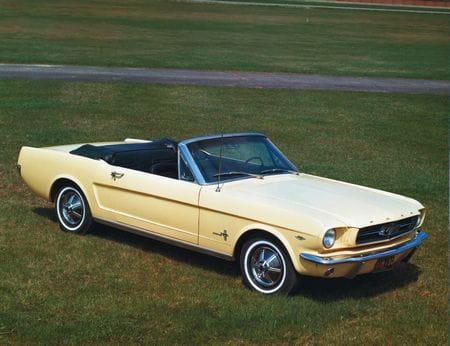
Although Ford considers all Mustangs built from 1964 until 1973 to be part of the first generation of their longest-running nameplate, the stylish “pony car”, based on the plain-jane Falcon, went through three distinct re-styles during this period.
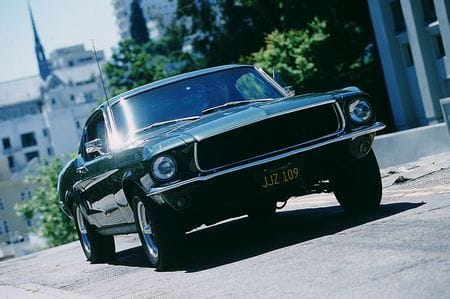
68 Bullitt
1967-1968
The first major re-style took place in the fall of 1966. While the 1967 Mustang kept the same 108“ wheelbase, vehicle length was increased from 181.6 inches to 183.6 inches and the width grew from 68.2 inches to 70.9 inches. It also marked the beginning of the pony car horsepower wars.
The body was also all-new, not just a freshening of the previous design. The familiar triple taillights were now separated and integrated into a concave rear fascia. The grille opening was larger and more aggressive looking and the chrome trim on the rear quarter panels had given way to simulated scoops. The fastback model was especially striking. The ’65 and ’66 fastback style roofline ended in the middle of the trunk. On the ’67 model, the roofline ended at the very end of the trunk.

The new aggressive styling also came with more optional horsepower as the 1967 model was available with the first big block, a 390 cubic inch (6.4 Liter) V-8 rated at 320 horsepower. The optional GT Equipment Group now included power front disc brakes, dual exhaust with 4 outlets, special GT gas cap and a special handling package, in addition to the side stripes, fog lamps and badges from the 64-66 versions. Badging also reflected whether the model was equipped with a manual (GT) or automatic (GTA) transmission. An exterior décor group option was also added that included a hood with rear-facing louvers that featured built-in turn signals visible to the driver.
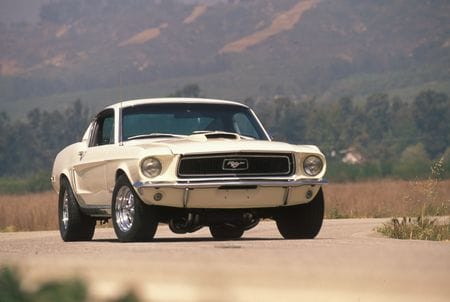
1968 Cobra Jet 428
The interior was also redesigned with Rally-Pac instrumentation and the optional air conditioning package was integrated into the dashboard, not hung below it as on previous models. Tilt-away steering was offered as an option as were fold-down rear seats on the fastback model.
1968 also marked the year that the Mustang made its famous appearance in the Steve McQueen movie Bullitt as a Highland Green 390 Mustang fastback chased a black Dodge Charger R/T 440 through the streets of San Francisco.
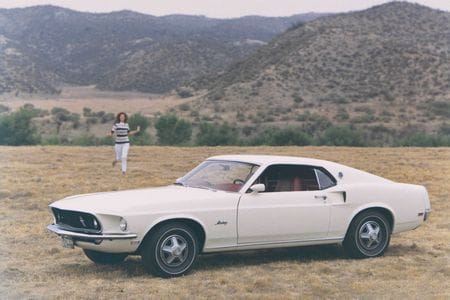
1969-1970
The Mustang was again re-styled for the 1969 model year. The wheelbase remained the same as the original model, but the length increased to 187.4 inches and the width grew to 71.7 inches on some models (base versions were listed at 71.3 inches). Although a larger 6 cylinder engine was offered as an option, the real news was the optional 351 cubic inch (5.7 liter) engine, available with either a 2-barrel or 4-barrel carburetor that slotted just below the 390 4-barrel. Both the 302 (5 liter) and 429 (7 liter) engines were offered in a special “Boss” version. Ten different engines, in total, were offered in ’69.
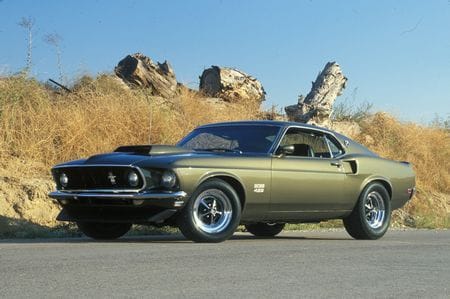
1969 Boss 429
New front styling featured quad headlamps, with new quarter panel trim and side scoops. The fastback body style was dropped in favor of a SportsRoof model that also featured an integrated rear spoiler. New models included the “E” (for economy), the Grande (with houndstooth-checked upholstery) and the Mach 1 that featured special interior trim along with flat-black hood paint and a hood scoop (functional only on the 428 Cobra-Jet models).

1970 Boss 429
For 1970, the headlamp arrangement was changed, the quarter panel vents were eliminated and the rear taillamps were re-styled. The 390 c.i. engine was eliminated and the 351 engine originally sourced at Ford’s Windsor engine facility was replaced by one produced in Cleveland.
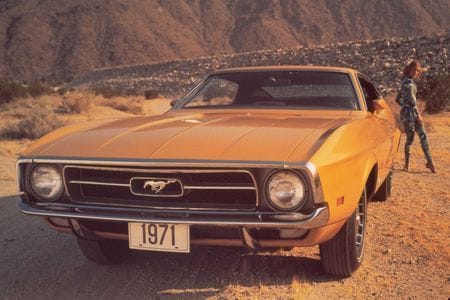
1971-1973
The years1971 to 1973 were to mark the last of the first-generation, Falcon-based Mustangs. By this time, the Mustang’s wheelbase had grown 1 inch to 109 inches, while the length was stretched to 193.8 inches. Width had also grown to 71.4 inches.
For 1971, engine choices included a 250 cubic inch 6 cylinder along with a 302 2-barrel, 4 different 351 cubic inch engines and two variations of the 429. The Boss version of the 351 (replacing the 302) produced 330 horsepower, while both 429’s (no Boss version was offered) were rated at 370 hp.
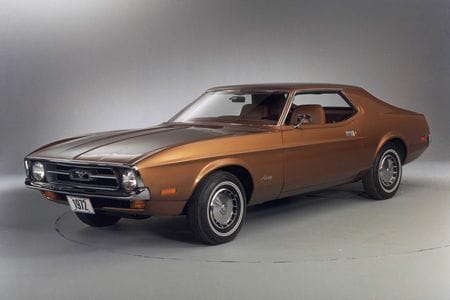
Outside, the trailing edge of the hood was re-styled to accommodate hidden windshield wipers; the doors featured flush handles, while the rear fascia featured large triple-lens taillamps.
1972 saw the long arm of Federal regulation (and the cost of insurance premiums) continue to eviscerate the muscle car. The Boss 351 and both 429 engines were dropped, leaving the Mach 1 as the sole performance model, although a 351 High Output version with a special cam, forged alloy pistons, mechanical lifters and a 4-barrel carburetor was available for a limited time.
For 1973, changes were limited to minor variations in trim, while the convertible model was the last drop-top Mustang for nearly ten years.
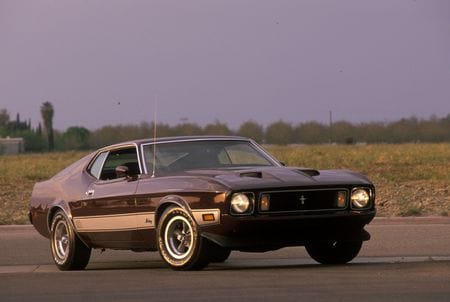
1973 Mach 1












